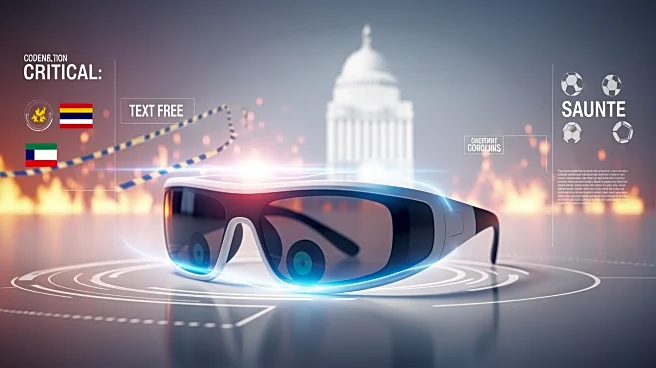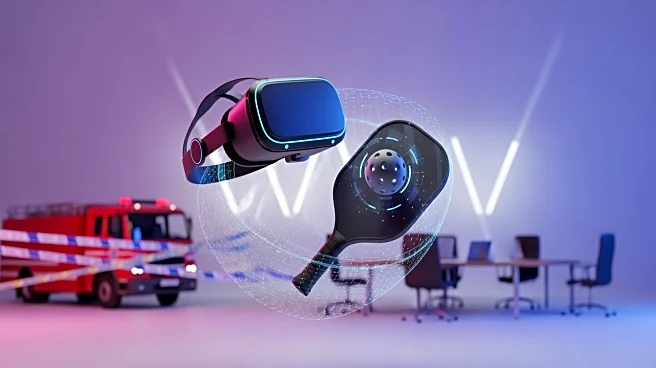What's Happening?
The year 2025 sees a surge in smart glasses development, with major tech companies like Meta, Apple, and Samsung unveiling new models. These devices aim to replace bulky VR headsets with lightweight, phone-like designs. Meta's Ray-Ban Display and Apple's
focus on smart glasses over the Vision Pro revamp highlight a shift towards more wearable and practical augmented reality solutions. Samsung's Project Moohan promises affordable options, increasing consumer choice and accessibility in the augmented reality market.
Why It's Important?
The advancement of smart glasses technology represents a significant shift in how consumers interact with digital content. By offering more practical and wearable solutions, these devices could potentially replace smartphones as the primary means of accessing information and communication. This shift could have wide-ranging implications for the tech industry, influencing everything from app development to consumer electronics design. As companies compete to offer the most user-friendly and affordable options, consumers stand to benefit from increased innovation and choice.
What's Next?
As smart glasses technology continues to evolve, consumers can expect further advancements in design, functionality, and affordability. Companies will likely focus on improving battery life, user interface, and integration with existing digital ecosystems. The competition among tech giants could lead to rapid innovation, with potential impacts on various industries, including entertainment, education, and healthcare. As these devices become more mainstream, they may also influence societal norms around technology use and personal interaction.













